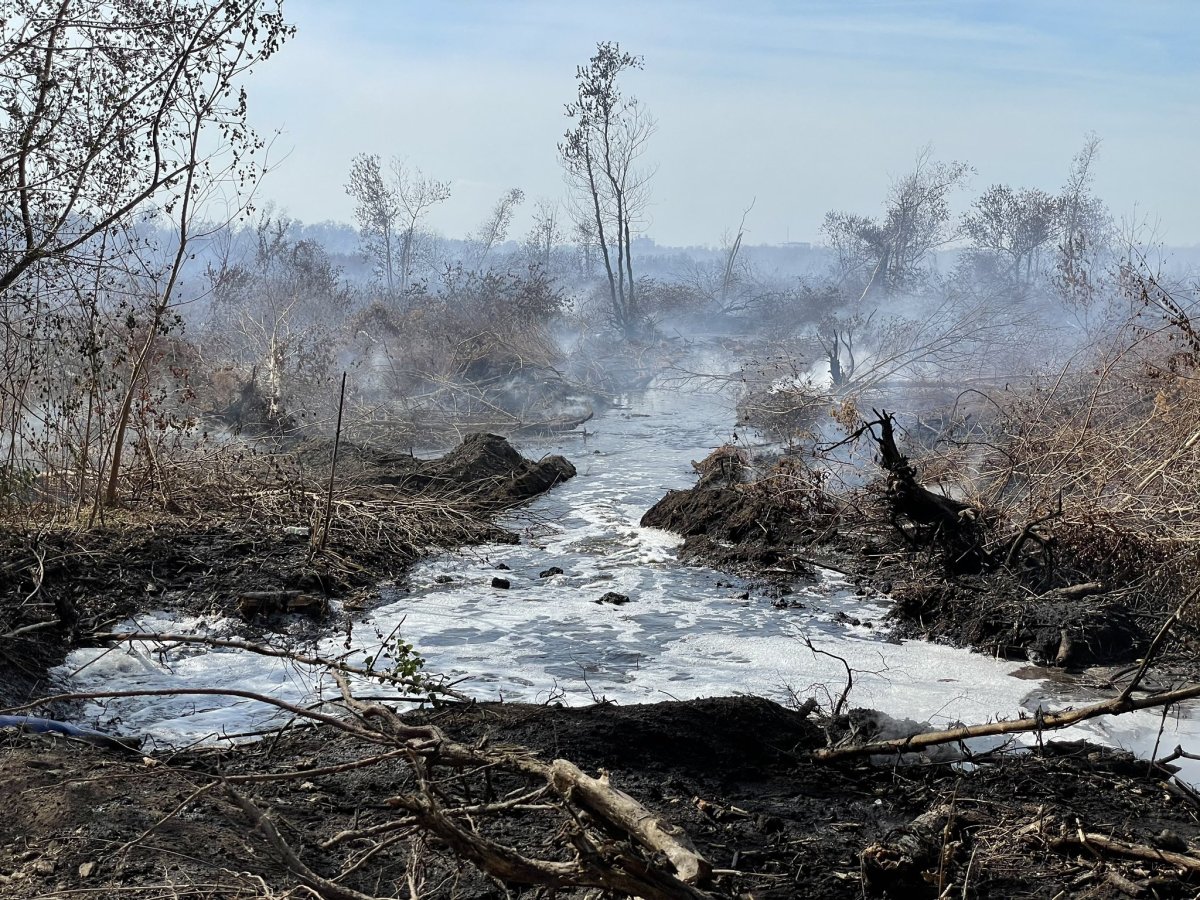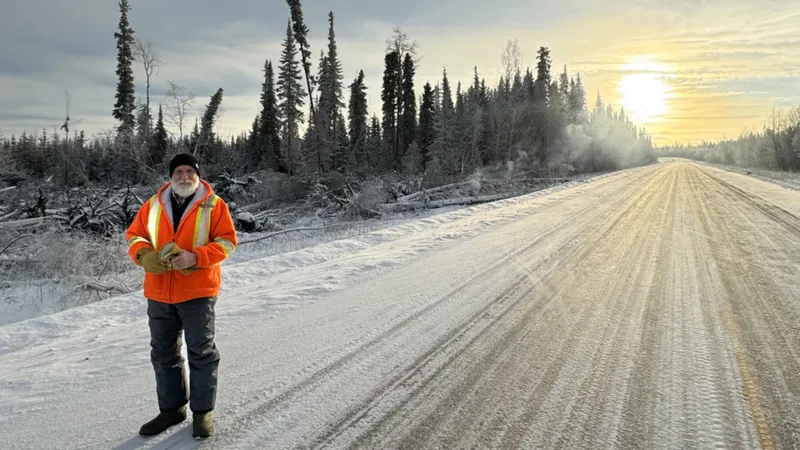Even in the depths of Canada’s winter, the embers of last year’s record-breaking wildfire season persist. So-called zombie fires are burning at an unprecedented rate beneath thick layers of snow, increasing concerns about what the upcoming summer will bring.
In winter, people driving on the highway through Fort Nelson, British Columbia (BC), can see and smell the clouds of white smoke rising from the land around them.
Sonja Leverkus, a firefighter and scientist from the small north-eastern British Columbia hamlet, remembers travelling during a snowstorm in November, but the snow didn’t seem white.
‘Zombie Fires’ Burning At An Alarming Rate In Canada
Instead, she described it as blueish-grey due to the smoke in the air.
“I’ve never experienced a snowstorm that smelled like smoke,” said Ms. Leverkus, who has lived in northern British Columbia for over 15 years.
She said these plumes remained visible into February, even on extremely cold days when temperatures dropped to -40C (-40F).
‘Zombie Fires’ sparks record. Arctic carbon emissions
Zombie fires cause the Fort Nelson smoke, sometimes known as overwintering fires.
They are flameless smoulders that burn slowly beneath the surface and are kept alive by an organic soil known as peat moss found in North America’s boreal forests and heavy layers of snow that protect them from the cold.
These flames are not uncommon. Experts estimate that during the last ten years, British Columbia has witnessed an average of five or six that continue to burn over the cold months.
However, in January, the province experienced a historic peak of 106 active zombie fires, raising concerns among fire experts about the implications for the following wildfire season.
Most go out on their own before spring, but 91 are still burning in British Columbia, according to government data, and those that have not been extinguished by March may re-ignite as the snow melts and they are exposed to air.
As a result, scientists have linked them to the early onset of wildfire seasons.
The nearby province of Alberta is also experiencing an increase in these winter fires, with 57 burning as of early February, roughly ten times the five-year normal.
Jennifer Baltzer, a biology professor at Wilfrid Laurier University and the Canada Research Chair in Forests and Global Change, said, “This continued smouldering through the winter, I think, is very alarming to see,” especially after last year’s record-breaking wildfire season.
Wildfires in Canada burned about 18 million hectares (44 million acres) of land in 2023, an area roughly the size of Cambodia, greatly exceeding the country’s 10-year average.
The season was one of the worst in recent history, with several firemen killed in the line of duty.
Thousands of people were displaced from their homes, and the impact extended far beyond Canada’s borders when smoke blanketed most of the United States in June.
According to Mike Flannigan, a professor and fire control expert at Thompson Rivers University in Kamloops, BC, the devastating wildfire season is one of the reasons for the current high number of zombie fires.
The majority of them are fires that could not be completely extinguished by last autumn due to a shortage of resources, he explained.
‘Zombie Fires’ Burning At An Alarming Rate In Canada
By the end of the year, officials had recorded more than 2,200 wildfires in British Columbia.
Prof Flannigan also cited the province’s catastrophic drought over the last two years.
According to the province’s drought map, the majority of British Columbia was experiencing moderate to severe drought as of February.
According to Ms Leverkus, the dryness has been as noticeable as the zombie fires.
She noted in the forest last summer that a brook that used to run freely had become “just puddles”.
These drought conditions persisted throughout the winter. The province has received so little snow that one ski resort in BC’s South Cariboo region was forced to close for the rest of the season in early January.
Zombie fires were historically rare, but scientists claim they have become increasingly common in recent years due to a fast-warming environment.
According to Forrest Tower, a fire information officer with BC Fire, officials are now watching them.
‘Zombie Fires’ Burning At An Alarming Rate In Canada
He stated that many cannot be extinguished manually because most of the province’s firefighting force is on leave for the off-season. They do not constitute a threat currently, he stated.
However, the primary concern is that the flames may re-ignite if British Columbia receives little snow or rain this spring.
If this occurs, he stated that the province’s seasonal firefighting force might be activated as soon as March or April.
Prof Flannigan stated that it is too early to forecast exactly what the forthcoming fire season will look like in British Columbia, but what the province has witnessed thus far “is quite unusual”.
P
rof Flannigan stated that “the stage is set for a very active spring” because this is an El Nino year, which means hot and dry weather in western Canada.
SOURCE – (BBC)












